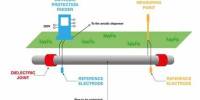A needle valve has a small port and a plunger that is threaded and needle-shaped. It is a sort of valve that allows you to precisely control the flow of a liquid or gas in your system. It provides for fine flow regulation, however it is often only capable of rather modest flow rates. It is made up of a thin, tapered needle-like plunger that fits into a corresponding seat. The position of the plunger relative to the seat can be adjusted by turning a handle or wheel attached to the plunger, thereby changing the flow rate through the valve.
Needle valves are frequently employed in applications that demand precise flow rate control, such as laboratory equipment, industrial operations, and instrumentation systems. They are particularly useful in situations where a small adjustment in flow can have a significant impact on system performance.
Construction and operation
An instrument needle valve employs a tapered pin to progressively open a gap, allowing for precision flow control. The flow can be adjusted and regulated using a spindle. A needle valve has a small aperture, a long, tapered seat, and a needle-shaped plunger on the end of a screw that fits exactly into the seat.
Flow between the seat and the plunger is available as the screw is rotated and the plunger is retracted; nevertheless, fluid flow is considerably restricted until the plunger is fully retracted. Because it takes many turns of the fine-threaded screw to retract the plunger, flow rate can be precisely controlled.
The virtue of the needle valve is from the vernier effect of the ratio between the needle’s length and its diameter, or the difference in diameter between needle and seat. A long travel axially (the control input) makes for a very small and precise change radially (affecting the resultant flow).
Applications
Needle valves may also be used in vacuum systems, when a precise control of gas flow is required, at low pressure, such as when filling gas-filled vacuum tubes, gas lasers and similar devices. Here are some common applications:
- Instrumentation: These are extensively used in instrumentation and control systems. They provide precise flow control in applications such as pressure gauges, flow meters, and analytical instruments.
- Laboratory Equipment: In laboratories, these are employed in gas chromatography, liquid chromatography, and other analytical instruments where accurate control of fluid flow is crucial for precise measurements and experiments.
- Hydraulic Systems: These are used in hydraulic systems to regulate the flow of hydraulic fluid. They are particularly useful in applications where a high level of precision is required, such as in hydraulic presses, lifts, and controls for heavy machinery.
- Chemical Processing: These are used in chemical processing plants to control the flow of various chemicals and fluids. Their precise control capability makes them suitable for applications where accurate dosing or mixing is required.
- Oil and Gas Industry: These find applications in the oil and gas industry for controlling the flow of oil, gas, and other fluids in pipelines, wellheads, and production facilities.
- Aerospace and Aviation: These are utilized in aerospace and aviation applications where precise control of fuel or hydraulic fluid flow is essential for the operation of aircraft systems.
- Water Treatment: These are used in water treatment plants to regulate the flow of water and chemicals in processes such as filtration, disinfection, and chemical dosing.
















